Dear Substack friends,
I hope that my letter finds you well. I’ve been meaning to write more often, but I’ve been preoccupied with life and work. I haven’t paid much attention to my clothes or style, so it also feels like I haven’t had much to write about lately. Having said that, the days are getting noticeably longer, and I can feel a fog lifting. The season of light approaches quickly now, which typically means that I will be more interested in what I wear.
Not only have I not been writing to you lately, but I have also not read much of what you have written. I had to cancel all of my paid subscriptions at the beginning of the year because of financial concerns. I feel really awful about it. I wish I could support other writers, but my income has been tanking for a while now, and I simply don’t have any extra money to spend.
I understand why writers paywall their Substacks (they should absolutely get paid for their hard work!), but sometimes I feel that those with very little financial means are shut out of the conversation. I lament that. It makes the fashion and style discourse less nuanced, and it leads to what looks like a privileged echo chamber to an outsider.
I know that some writers offer free subscriptions to those who are poor, but I personally feel that it’s too embarrassing to approach someone about my financial problems. It feels humiliating, so I would never do it. I’d rather stay on the outskirts and learn to sit with discomfort. It’s not so bad once you get used to it.
I still wish that there was an easier way we could talk about money, in this discourse of ours. When we try, everyone ends up feeling bad about themselves. People who have a lot feel guilty and act defensive, and people who have little feel left out and lash out at those who seem privileged. Everyone is uncomfortable. Then we all say in unison that “everyone is on their own personal path” and “we operate from different life situations”, but in the end we don’t really say anything at all. Collectively we try to make everyone feel less uncomfortable, but no one is comfortable with any of it.
I digress. I didn’t actually mean to ramble on about money, because I have something to show you:
Last year I bought this old tuxedo shirt and vest combo at a flea market. I bought it for my collection of vintage clothes, not intending to wear it necessarily, because it’s stained, collarless and it needed shirt studs. It just seemed like a really cool thing to have.
The maker of the shirt is Stenströms, an old Swedish shirt brand that was founded in 1899. I’ve been trying to figure out how old the set is, but I’m still struggling to date vintage menswear, especially when it comes to formal clothes. The styles have changed so little over the years (especially compared to womenswear) that it’s hard to tell them apart.
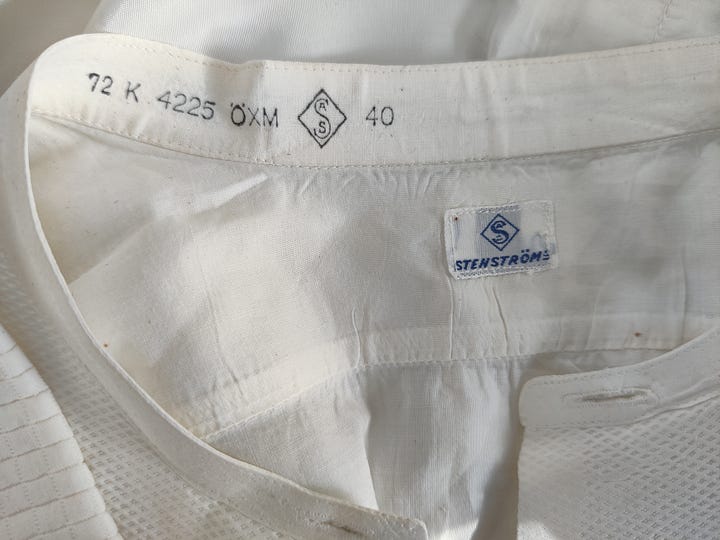
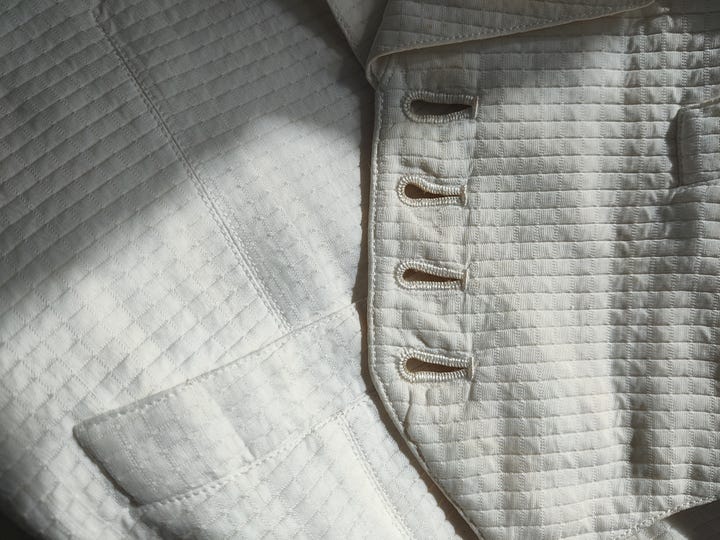
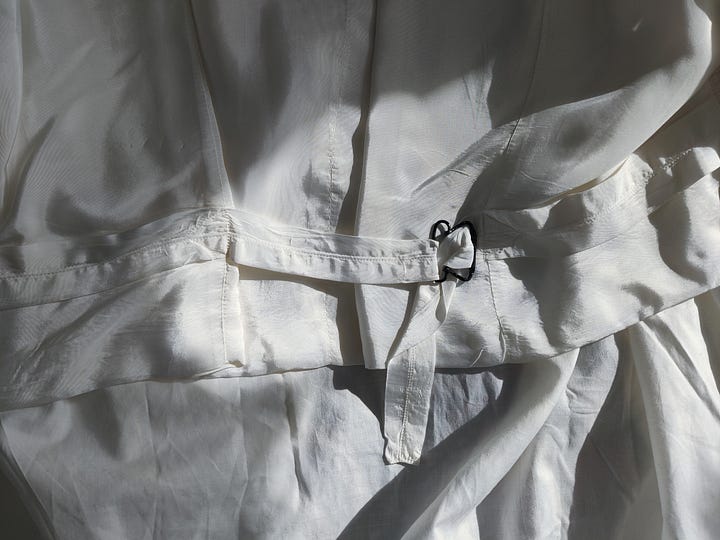
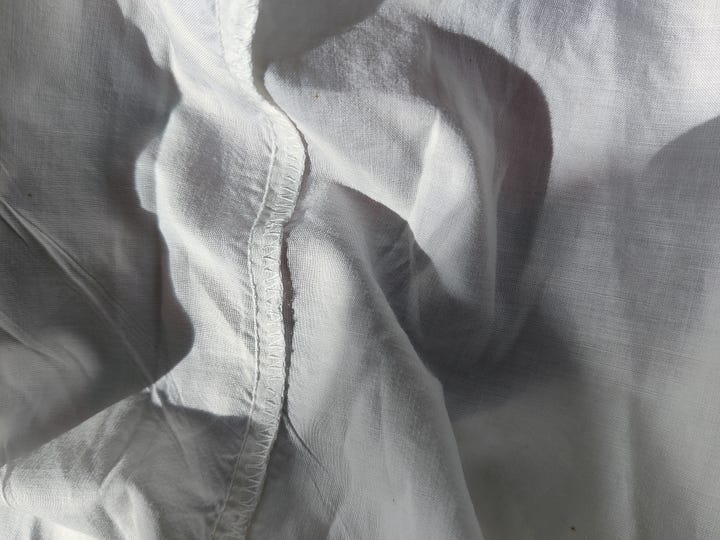
The vest has beautifully sewn buttonholes (the style is called ‘keyhole’ and it was common until the 1960s) and abalone buttons. That, the metal buckle on the back, the tag, the logo, and the stitch style and length makes me think that the set might be from the 1940s or the 1950s. I have the tail coat from the set as well, and the workmanship and the materials of the tails support my conclusion, to the best of my knowledge.
I’ve been toying with the idea of wearing the shirt and the vest for the past couple of months. They fit my body and I like the overall look and the materials, so I began searching for vintage stud sets for the shirt. Full stud sets from the 1940s and the 1950s tend to be a little pricey, but I came across a lot of mismatched studs on Etsy for a really good price in February, and I bought it as a birthday present for myself.
I like the idea of wearing random studs. It breaks the seriousness of the set.
Next up, I’ll try to find a suitable collar for the shirt. That might take a while. I’m a complete novice at this stuff and I’ll have to come up with the money, too. I still don’t know what to do about the stains on the vest. I’m considering embroidering something on top of them. Whatever I decide, I will share the process in the months to come.
This experience with the shirt set has made me re-evaluate what I mean when I talk about slowing down my consumption. It’s taken me over six months from buying this set to getting a little bit closer to wearing it. It’s a fascinating process. For a long time I’ve thought that buying less in terms of quantity is what slow consumption is, but I’m starting to think that it’s more about literally taking my time with the things that I buy and own. When I wait patiently, buying less comes almost automatically. It’s a side product of the process rather than a goal.
That’s all I have for you today. I wish you a lovely, relaxing Sunday!
Lots of love,
Tiia
P.S. I’ve moved on from watching Poirot, and I’m now tackling Miss Marple! You know, the original one from the 1980s, with Joan Hickson. She wears the same skirt suit and the same alligator handbag in almost every episode. I love that!






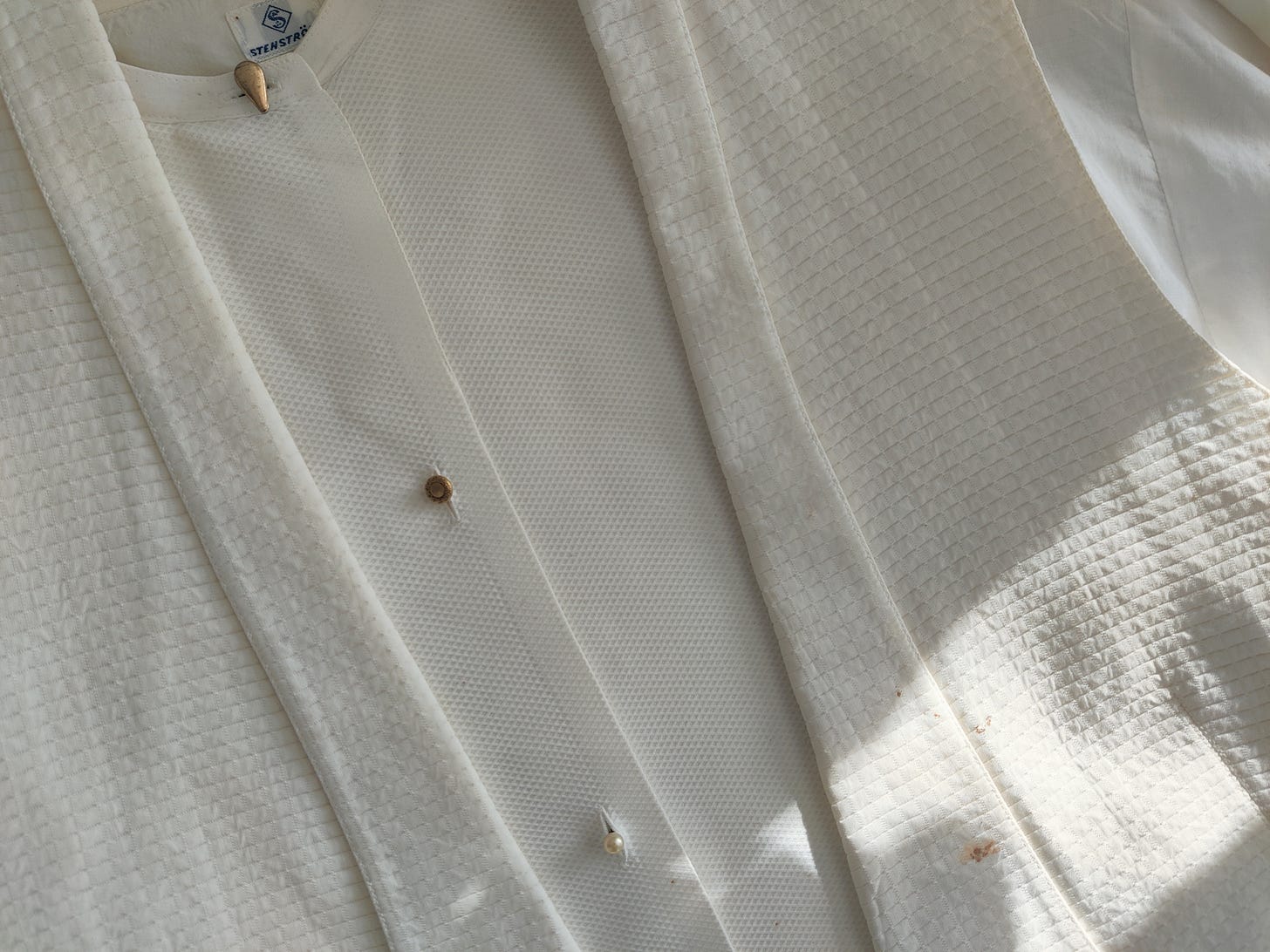
I hear what you’re saying about slowing down consumption. It’s one of the things I like about making my own clothes. I’ve just finished a suit that’s taken me nearly three months and it feels very meaningful because of all the time.
Time spent with clothes. I can see how that’s what slow consumption is about. There have been times in my life that I have loved something for a long time (an amazing pair of shoes, a great jacket) and as I have worn them over and over again, developed a relationship with them. And of course they motivated me to reinvent multiple ways to wear them, not because I was doing some Instagram “challenge” but because organically I just did so. I am trying to understand how this is different from a seemingly similar getting dressed issue that instead I (and i think many) view as a defect. That is, a closet stuffed with “options” and you wear the same thing over and over which you find unsatisfying and depressing. In theory these should be the same conditions but in practice… Is that in the first situation you do it by deliberate choice because you fall in love with the object and develop a relationship? Whereas in the second situation, it’s a defensive reaction to overwhelming consumption? As usual Tiia, you have given me something to think about!